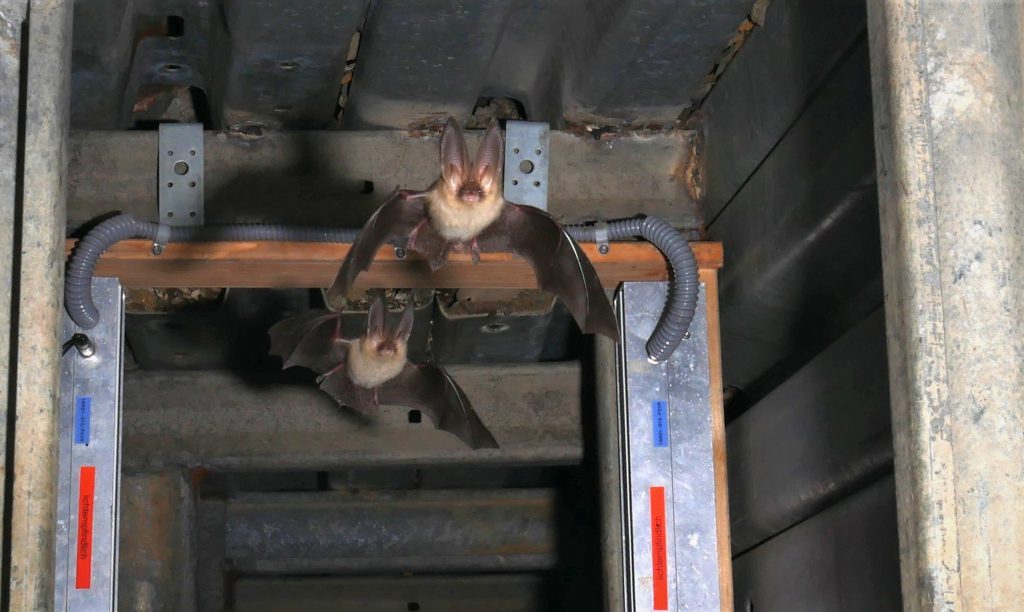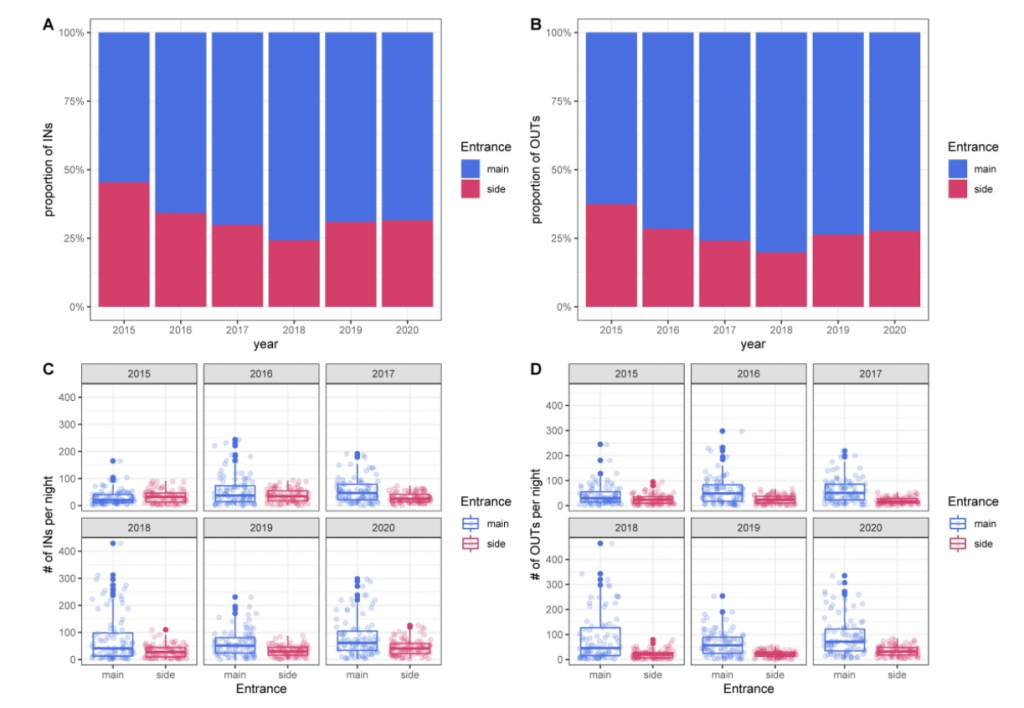Remote sensing systems have become important survey tools for automatic wildlife monitoring, and their rapid improvement in recent years has transformed ecological research and biodiversity conservation. At bat hibernation sites, infrared light barriers and camera traps with flash offer an efficient alternative method for monitoring the presence and activity pattern of endangered bat species. In this system, a photo is taken by a camera as soon as a bat has passed through the associated infrared light barrier. However, it was previously unknown whether the white flash affected bat behavior, and thus whether the method constitutes a minimally invasive method that can measure the true natural behavior of bats.
In a 16-week experiment, a research group from the University of Greifswald investigated the behaviour of bats at four hibernation sites, by alternately activating and inactivating the flash on a weekly basis throughout the autumn swarming and onset of hibernation. Flight behavior was documented with an infrared video system, which was also combined with an acoustic recorder. Based on the video clips as well as the light barrier registrations, the nightly activity was compared between the one-week experimental phases, as well as the way in which the bats entered based on their flight direction and other behaviour (e.g. straight-line flight, circling and social interactions), and the latency of the first echolocation call after the flash was triggered. In addition, weather conditions were included in the analysis, in particular precipitation and temperature at sunset.
Overall, the white flash had no effect on short- or long-term bat activity, flight direction, or echolocation behavior. The flash also had no effect on nightly bat activity, but we observed a decrease in nightly bat activity with increasing proportion of rainy hours. The flash had no effect on the flight direction of the bats, but the direction of flight was affected by the presence of other bats. Social interactions reduced the number of bats flying in the “default” direction (Fig. 1) and chasing or avoidance behavior were frequently observed. Likewise, no difference was detected in the time until the first echolocation call after a camera triggering between the nights with and without flash.
In addition, it has been observed that the proportional use of the main entrance (with camera trap) and side entrance (without camera trap) has not changed substantially in the last six years at a long-term monitoring site. On average, 67% of bats entered the hibernacula via the main entrance (Fig. 2), suggesting that this is the preferred entrance, despite bats being exposed to the white flash upon entrance. Moreover, the number of hibernating individuals counted during the winter census increased from approximately 250 (the year prior the installation of the monitoring system) to over 300 individuals in recent years. Our results highlight the potential of the investigated automated monitoring system as a minimally invasive method for long-term bat population monitoring and for studying species-specific phenology. The method can thus make an important contribution to a more objective assessment of bat hibernacula.

Used technology of the photo monitoring system: light barrier (ChiroTEC, http://www.chirotec.de), camera: Panasonic-DMC G5 (Metzblitz 58 AF, short-term exposure 1/5500 s).
Original study:
Krivek, G., Schulze, B., Poloskei, P.Z., Frankowski, K., Mathgen, X., Douwes, A. and van Schaik, J. (2021), Camera traps with white flash are a minimally invasive method for long-term bat monitoring. Remote Sens Ecol Conserv. https://doi.org/10.1002/rse2.243


